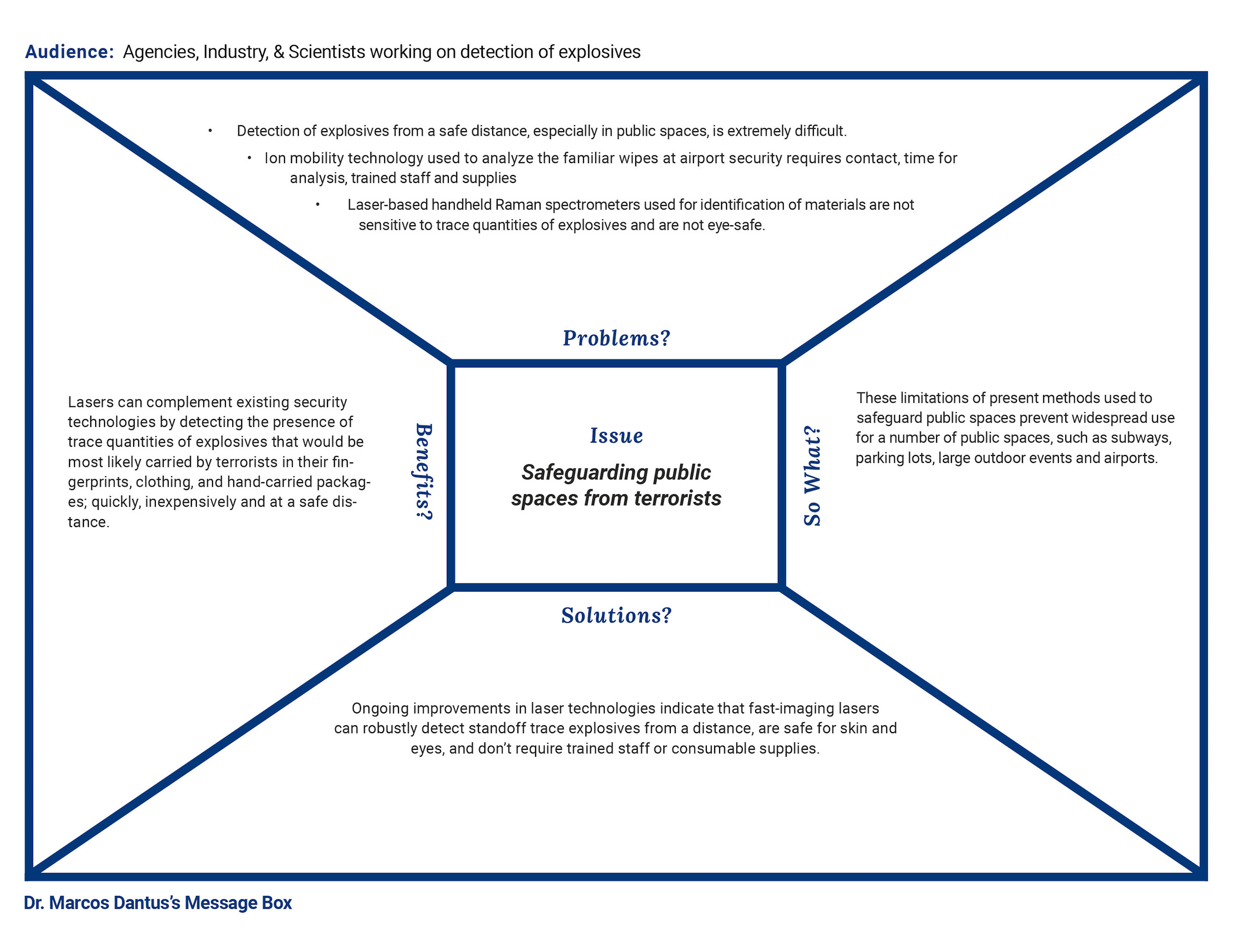Dr. Marcos Dantus’s Message Box
Marcos Dantus is a Distinguished Professor of Chemistry and Physics at Michigan State University. He requested coaching from COMPASS to prepare for his presentation at a conference of security professionals, including staff from government agencies and businesses, as well as academics. His audience all worked in the field of detecting explosives, but had differing levels of technical knowledge. His first message Box succinctly conveyed some key ideas, but because Marcos was introducing an entirely new approach to detecting explosives, he wanted to be certain that his language was as persuasive as possible, without appearing to discredit those in his audience committed to existing approaches. His final Message Box reflects that nuance, with some key words in his Benefits section (such as “complementing existing strategies”). And it emphasizes the particular situations in which his new approach might be beneficial in the So What section. He acknowledges the differing levels of technical knowledge in his audience by providing examples in the Problem and Solution sections. Marcos reported that his talk went extremely well: “Many people that had never used laser and that were very skeptical, came and told me that they liked the presentation and saw great potential.”
Read Transcribed Message Box Here
Dr. Marcos Dantus’s Message Box
Audience: Agencies, Industry, & Scientists working on detection of explosives
Issue: Safeguarding public spaces from terrorists
Problems?
- Detection of explosives from a safe distance, especially in public spaces, is extremely difficult.
- Ion mobility technology used to analyze the familiar wipes at airport security requires contact, time for analysis, trained staff and supplies
- Laser-based handheld Raman spectrometers used for identification of materials are not sensitive to trace quantities of explosives and are not eye-safe.
Benefits?
Lasers can complement existing security technologies by detecting the presence of trace quantities of explosives that would be most likely carried by terrorists in their fingerprints, clothing, and hand-carried packages; quickly, inexpensively and at a safe distance.
Solutions?
Ongoing improvements in laser technologies indicate that fast-imaging lasers can robustly detect standoff trace explosives from a distance, are safe for skin and eyes, and don’t require trained staff or consumable supplies.
So What?
These limitations of present methods used to safeguard public spaces prevent widespread use for a number of public spaces, such as subways, parking lots, large outdoor events and airports.
